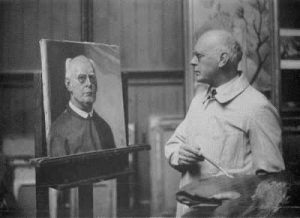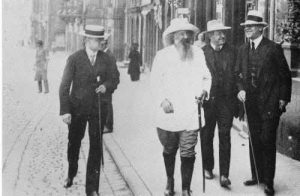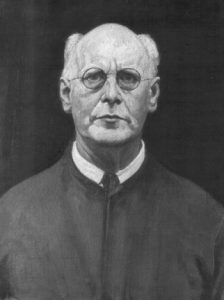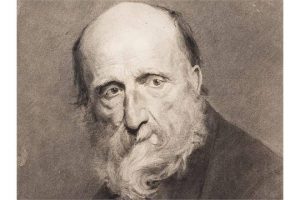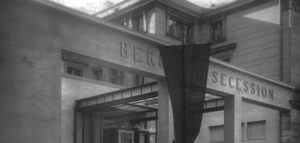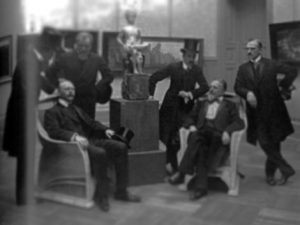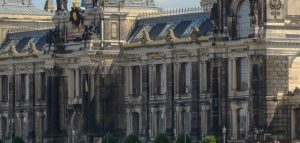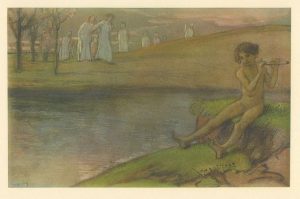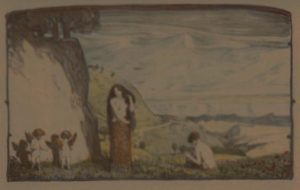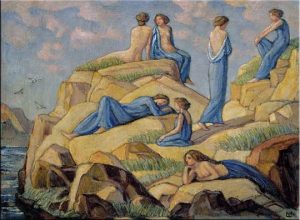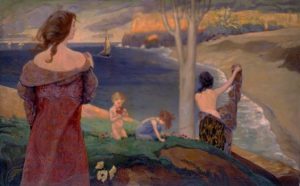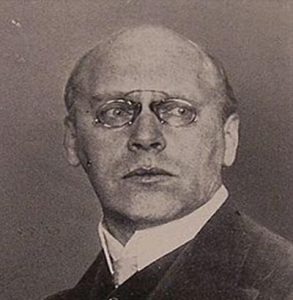Ludwig von Hofmann was born on August 17, 1861 in Darmstadt near Dresden.
1861 - 1945
Ludwig von Hofmann

description
A German artist, graphic illustrator and designer, master of monumental painting.
He was born into the family of an influential Prussian statesman in the German city of Darmstadt. Since 1890, Hoffmann lived in Berlin as a free artist.
Ludwig von Hoffmann was a member of avant-garde group “Eleven”, an active participant of cultural movement “Berlin Secession” and the representative of “Neue Sachlichkeit” (new materiality), the artistic trend of the 1920s, the founder of the “New Weimar” movement. As a teacher, he worked at the art school in Weimar and at the Dresden Academy of Arts, where he directed a class of monumental painting. It was Hoffman who owned the ideas of the spiritual and practical revival of the postulate “art and life are in the context of each other.”
Among the admirers of the master’s work, there were many famous people. for example: Austro-Hungarian Empress Elizabeth, writers Rainer Maria Rilke, Thomas Mann and Hugo von Hofmannsthal.
Key ideas:
– The themes of L. von Hoffmann’s paintings are typical for Symbolism: bucolic and idyllic landscapes that are inhabited by mythological and surreal creatures, antique and biblical motifs (there are several paintings titled “Adam and Eve”).
– The artist aspired to the beauty of forms, unique coloristic solutions of his works and often gave symbolic subjects a veiled erotic character. Female images, especially numerous nu, are ambiguous and, as a product of naturalistic Symbolism, are characterized by sensuality, which is often permeated with nostalgic dreams.
– The art of Hoffmann-symbolist is decorative in the best sense of the word: forests, valleys, blossoming fields are full of dazzling brilliance; birds show their fabulous plumage; slim boys and girls are on the horses of ideal beauty, they swim and drink from amazing rills, and their nakedness or fluttering garments are gilded with the rays of the sun.
– Under the influence of the First World War, Hoffmann extended his artistic range, supplementing it with tragic motives, introducing such new characters as Sisyphus and Tantalus and changing the stylistic means of expression to more expressive ones.
– In the mature period of his creative activity, Hoffman sought inspiration in Art Nouveau, which is the most perfectly demonstrated by his graphics, monumental works (he was ordered to design rooms, libraries, theaters), as well as engravings, xylographs and lithographs for books by G. von Hofmannsthal, S.George and T. Doybler. Art Nouveau technique was manifested, for example, in using expressive contrasts as a stylistic means, in clear (recognizable) symbolics.
1861
1883
1889
1890
1849
1898
1903
1906
1916
1928
1930
1945
The birth of the artist
Entered the Academy of Arts in Dresden
Entered the Academy of Arts in Dresden, where he studied with Henry Hoffmann, his uncle, then continued his studies at the Karlsruhe Academy (Baden Art School of Grand Duke Frederick I) at the class of Ferdinand Keller, then in Munich.
Attended the private academy of Julian in Paris
Attended the private academy of Julian in Paris, met de Chavanne, P. Benard, M. Denis.
Lived and worked as a free artist in Berlin
Lived and worked as a free artist in Berlin. He became a member of the Group of 11, met M. Klinger, L. Corinth, M. Lieberman, E. Munk. In 1892, in Munich, there was a landmark meeting with the works of H. von Mare.
He was fascinated by ancient art
Traveled a lot several years, living in Rome for a long time and near Fiesole in his villa. He was fascinated by ancient art; created a lot of illustrations for magazine “Pan” – the leading art-modernist edition of Germany.
Became a participant of cultural movement Berlin Secession
Became a participant of cultural movement Berlin Secession.
He was elected a professor of the Grand Ducal Art School
He was elected a professor of the Grand Ducal Art School (Weimar). He became one of the founders of movement “New Weimar”.
He traveled around Greece
Created 6 frescoes for the projected G. van de Velde museum hall in Dresden. He traveled around Greece; worked on three-part fresco “Muses” for the hall of meetings of the Senate.
He went to the Dresden Academy of Arts as a professor of the monumental painting
He went to the Dresden Academy of Arts as a professor of the monumental painting class (he worked there until 1931). He designed the reading room of the Leipzig Library. Illustrated works of classical literature (Odyssey and Ilyada, G. Hauptmann’s works).
Participated in the Art Competition at the Summer Olympic Games (Amsterdam)
Participated in the Art Competition at the Summer Olympic Games (Amsterdam).
In the times of the National Socialists, some works were included in the section of degenerate art
In the times of the National Socialists, some works were included in the section of degenerate art. However, in German museums, most of the works continued to be exhibited.
The death of the artist
He passed away on August 23, 1945 in Pilznica near Dresden.

